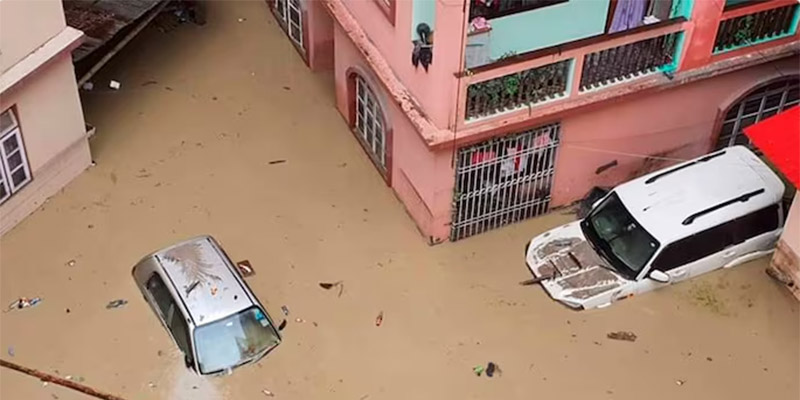Rescue operations in India’s north-eastern state of Sikkim are in full swing, with over 100 persons still missing. Sikkim, located in the Himalayas, has a history of flooding and natural calamities. Last year, heavy flooding displaced tens of thousands and killed at least 24 people.
The recent disaster, caused by a cloudburst over a highland lake, has already caused at least 26 deaths, including seven troops. The flood’s severity increased when water was released into the Teesta River from a neighboring dam.
GLOF (Glacier Lake Outburst Flood)
This catastrophe is an example of a Glacier Lake Outburst Flood (GLOF), in which enormous lakes generated by glacier melting burst free of their natural dams, known as moraines, which are made of rock, sediment, and debris. The South Lhonak glacier in north Sikkim, where this occurrence occurred, is one among the region’s fastest receding glaciers. It eroded around 2 kilometers between 1962 and 2008 and another 400 meters between 2008 and 2019.
GLOFs have caused huge disasters in the Himalayan region, which is home to around 7,500 glaciers. The 1926 Jammu and Kashmir deluge, the 1981 Kinnaur valley floods in Himachal Pradesh, and the 2013 Kedarnath outburst in Uttarakhand are all examples.
Identifying the Causes of the Sikkim GLOF Event
The exact cause of the Sikkim GLOF event is unknown. According to satellite photographs from the Indian Space Research Organization’s National Remote Sensing Centre, around 105 hectares (about 1 square kilometre) of the glacier-fed lake had drained out in the days preceding the disaster. Calculating the volume of water without physical measurements proved difficult. The Central Water Commission’s water-monitoring equipment recorded an increase in water levels, with water moving at over 55 kilometers per hour. This abrupt release gave downstream communities little time to react.
According to the National Disaster Management Agency, the principal causes of the surge are a combination of excessive rainfall and a GLOF occurrence. The lake, located at a height of 5,200 meters and surrounded by an ice-capped mountain, poses unique problems for studying dynamics. There is also speculation about the significance of earthquakes in Nepal on October 3, which happened approximately 700 kilometers away but may have contributed to the disaster.
A Threatened Ecosystem
This tragedy highlights the increased probability of GLOF incidents in the Himalayas as temperatures rise and climate change takes effect. The fragile Himalayan ecology, already threatened by hydropower and other development projects, is under threat of more disturbance. GLOFs are one of the probable outcomes of regional warming.
Following this disaster, Sikkim’s ecosystem and the delicate balance between development and ecology are being scrutinised. Eco-activist, Mr Gyatso Lepcha, underlines the impact of hydropower developments on Sikkim’s delicate ecosystem. Despite being in Seismic Zone IV/V and suffering some of the heaviest yearly rainfall in the country, Sikkim is home to 12 such projects.
As we ruminate on these increasingly frequent natural disasters and their complex causes, it becomes evident that responsible environmental stewardship is critical for the health of our ecosystems and the people who rely on them. Climate change and the fragility of ecosystems demand smart, long-term solutions.



